References

Test ASCENDO Live 15
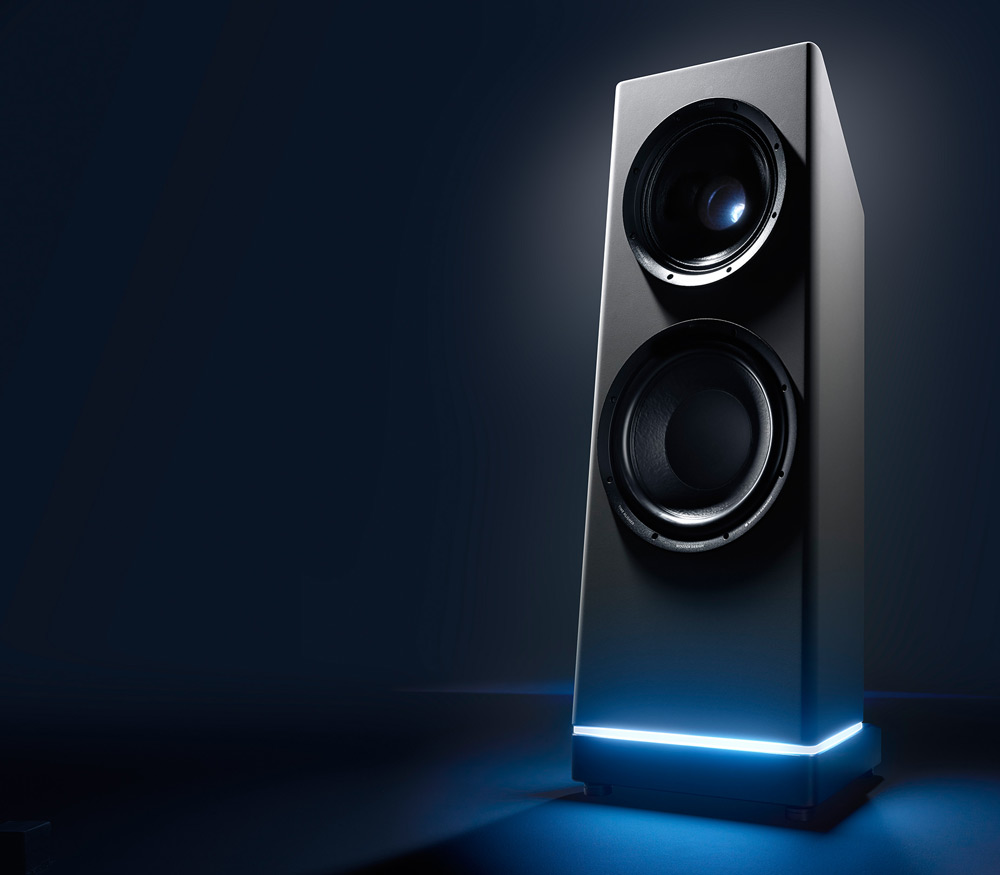
Everybody wants to build the ideal loudspeaker – and theoretically it's clear what it has to be capable of: The sound should reach our ears as it happens in nature. This means that the different drivers of a loudspeaker have to play together in such a way that their signals arrive at the listener’s ears simultaneously to form a coherent whole. In addition, the music must be reproduced in its quietest moments with its finest detail and at the loudest passages with its full power. This catalogue of requirements sometimes leads to intensive research, for example at Ascendo: The company based in the Frankonian city of Ansbach has been searching for the ideal loudspeaker for more than twenty years now – and they have long been on the right path: Their development of loudspeakers with perfect time response and high performance qualities was supported by the Federal Ministry for Research and Technology and awarded by the South German state of Baden-Württemberg. The project led to expertise and speaker technologies with which Ascendo caused a sensation in the home cinema sector - and from which the serial version of the Ascendo Live 15, which had been announced somewhere back in spring and has now been presented, derives its benefits.
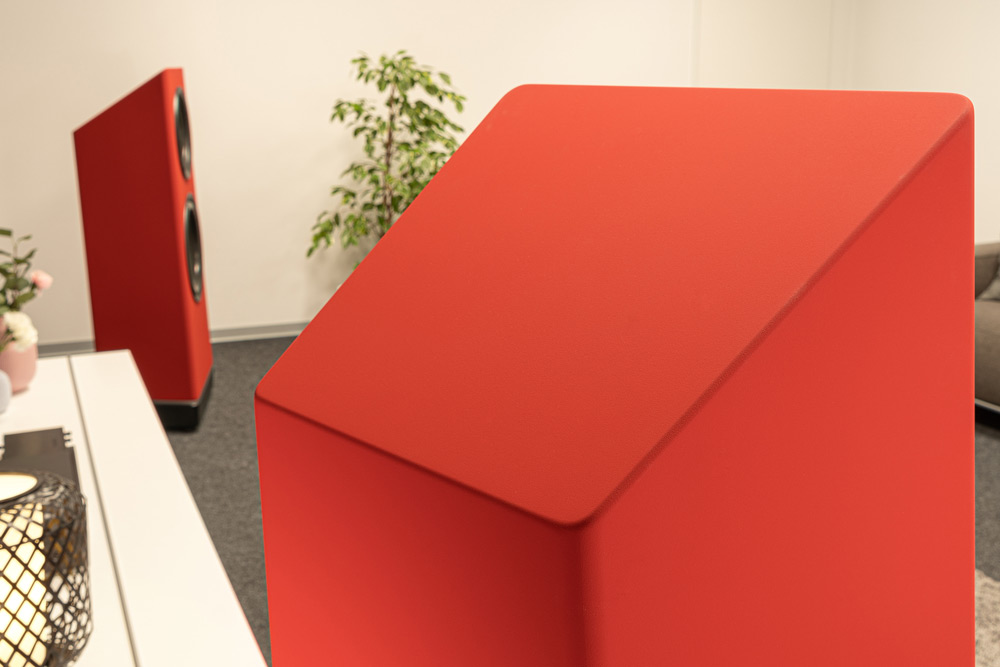
Exceptional appearance
When you look at the Ascendo Live 15, you'll be amazed: the geometry of this loudspeaker alone is extraordinary. The cabinet, which Ascendo gets manufactured by a carpenter’s workshop in Germany, has an ingenious trapezoid shape: higher in the front than in the back, wider in the bottom than in the top - this elaborate geometry acoustically prevents the formation of standing waves that usually tend to impair the sound. Visually, this design ensures that the Live 15 is extremely suitable for living environments and, moreover, has a remarkable WAF (Woman Approval Factor). The paint coat also contributes to this: Our test model is kept in a red, rough velvety Nextel coating. Any other colour of the RAL palette is possible as well, and as an alternative to Nextel, Ascendo also offers a silk matt finish or genuine twelve-layer piano lacquer. All this underlines its gracefulness. The speaker, with its maximum dimensions of 129 x 49 x 33 centimetres, is really anything but small, and the Live 15 also proves to be extremely weighty: 94 kilograms testify to the fact that a lot of material has been used here. The massive sealed cabinet is made of thick MDF and birch plywood. At the front it’s opulent six centimetres thick, because the baffle also carries the luxuriant metal decorative rings with which the puissant drivers are surrounded and fixed. The material outlay already reveals what is to be expected: Here, tremendous powers act during the sound transduction. Inside the enclosure, numerous struts and vibration dampers add to the weight. The steel plinth, furthermore, gives the cabinet, which is inclined slightly to the rear, a rock-solid stand, and also contributes to the overall weight. The enigmatic illumination attracts attention as well: On request, the Live 15 can be equipped with a lighting system. A circumferential LED light interface above the plinth sets the scene for the Live 15, whereby the colour can be selected and changed as desired via the remote control. In addition to that or alternatively, an almost mysterious corona of light shines through the fabric dust cover in the centre of the coax chassis, creating a wow effect in the living room.
Huge coax and powerful woofer
The drivers used not only originate from the well reknown manufacturer PHL, but arouse astonishment in several respects. On the one hand, at first sight one detects only two drivers, though the speaker being a three-way system. The answer is: The highs and mids are reproduced by a socalled coaxial driver. With this type of transducer, the tweeter is located in the centre of the midrange driver. This corresponds to the ideal of the one-point source: In nature, every sound event we hear comes from a point of origin to our ears. The Ascendo Live 15 surprises with a very special representative of its kind. The cone of the midrange driver, made of specially coated paper, has a diameter of an impressive 30 centimetres - and as massive as its appearance is, so immense is the weight of 24 (!) kilograms. In the centre we see a dust protection cover – and hidden behind it there is the tweeter realized as a one-inch horn driver, positioned clearly behind the midrange cone. This offset of the drivers ensures that the high and midrange frequencies reach the listener at the same time, as a tweeter reacts much faster to an impulse than the more massive and therefore slower midrange and bass drivers. And the woofer amazes us as well: the bass driver has a diameter of impressive 40 centimetres. Its size of 15 inches has also found its way into the model designation of the Live 15. Its large surface and its more than respectable excursion capabilities – this driver easily comes up with a linear stroke of 35 millimetres – enable a powerful, very deep and yet precise bass. As with the coax unit, the diaphragm of this driver of professional provenience, manufactured according to Ascendo specifications, is made of coated paper, thus providing the necessary stiffness for the cone and its clean oscillation behaviour.
Thanks to the DSP’s performance: Hi-Fi sound, cinema mode and room correction
The driver triumvirate plays together as a three-way system - as long as you leave the Ascendo Live 15 in "High End Stereo" mode. But this can be changed: Thanks to the built-in sound processor, you can alternatively set this speaker to "Cinema" mode. Then the coax unit plays as an independent two-way system, while the woofer, which now acts separately, becomes the subwoofer responsible for the low-frequent effects. This clever trick allows the Live 15 to provide a more intense cinematic experience. However, the sound processor can also be accessed for room correction. The room in which a system plays is actually part of the sonic chain and even has a main influence on the resulting sound. Less furnished rooms, parquet floors or large glass surfaces provide a brighter, harder sound, while rooms with carpeting, sofas and curtains, on the other hand, give us a softer, perhaps somewhat dull sound. Depending on the geometry of the room, some frequencies may be overemphasized, causing the bass to boom, or underrepresented, making the sound appear a little bloodless. In order to eliminate all these effects, the acoustics of the room are measured by an Ascendo service employee or the respective dealer and calibrated with the help of the sound processor so that the resulting sound gets the right balance. The customer then has the option of adjusting and storing his preferences with a sound control tool. The sound management system can also be used to compensate for time delay differences between the speakers, such as when the positioning of the two speakers is unequal.
Amplifiers, connections and control
To ensure that the sound is not only balanced, but also powerful, the drivers are driven by a built-in amplifier – or better: by a total of four power units, having each side equipped with a 650-watts amp for the tweeter/midrange coax and a 1,000-watt amp for the woofer. That's a total of a whopping 3,300 watts of amplifier power! By splitting the amplification work and because of the monoblock design, the amplifiers can work extremely clean and can therefore be flexibly used – for example to switch between stereo and cinema mode. To feed in the signals, we find the connections on the rear side of the electromagnetically shielded plinth, which houses the entire control electronics. On the analogue side, the Live 15 offers two balanced XLR inputs for the best possible signal transmission. Two analogue sources or an audio preamplifier and an AV preamplifier can be connected and used simultaneously without switching. The Live 15's Sound Management allows it to handle both unamplified and pre-amplified signals. There are also three Ethernet sockets, or more precisely three AVB ports. AVB stands for Audio Video Bridging. This standard was developed for having AV components networking with each other and thus exchanging their data and synchronize themselves. Each Ascendo speaker is connected to the next with a single CAT cable, so the system can also be expanded with additional center and subwoofer units for a high-graded hi-fi and home cinema setup. The advantages remain the same: Signal transmission is effected in real-time, synchronous and completely lossless, so cable lengths no longer matter anymore – this also applies to music signals that can be streamed directly to the Live 15 via an AVB network. The music can even be fed analogously into a Live 15, internally converted by the speaker itself and then distributed to the other networking components via AVB. In order to control the Live 15 with its sound processor, an access point can be connected to any AVB port. This is a small nano router that is included in the scope of delivery. You can use it to set up your own Ascendo WLAN, so you can control each individual speaker conveniently via smartphone or tablet and also via a computer.
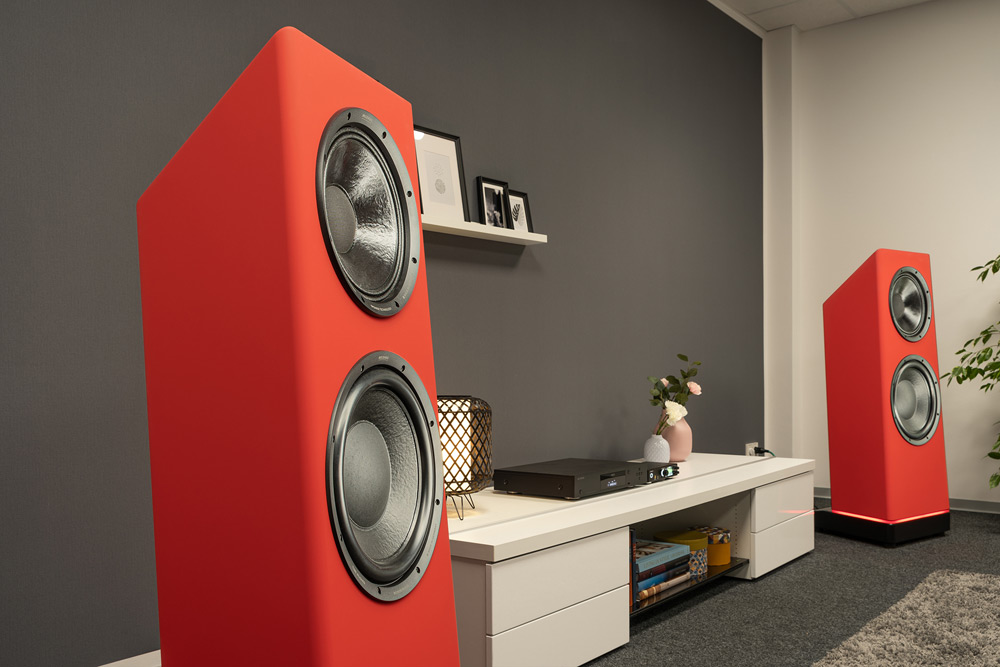
Finally, the Service: Delivery and calibration
Does that sound complicated? It might, but it isn't. In any case, the setup and calibration can (and should) be directly booked as a service. In our listening room, Stefan Köpf, founder of Ascendo and designer of the Live 15, personally takes care of everything. To adapt the speakers to the room, he installs a microphone at ear level at the listening position, then starts the correction software on his computer. The sound processor now sends a reference signal to the loudspeakers and the microphone records this signal, so that you can compare the target value, i.e. the reference signal, with the actual value, i.e. the signal emitted by the speakers and recorded by the microphone in the room. Based on the results, Stefan Köpf then uses the software to make corrections. This compensates for the room’s influence on the acoustic outcome. The compulsory calibration task is now followed by the optional sound adjustments: Now we can adapt the sound to our own tastes and requirements. A brief introduction to the user interface is all it takes to define various sound profiles as presets – such as a slight emphasis in the bass range, or a kind of loudness setting with which you can listen quietly while still getting enough low and high frequent information to perceive the sound as a balanced one. And, of course, you can also create different sound profiles for different music styles.
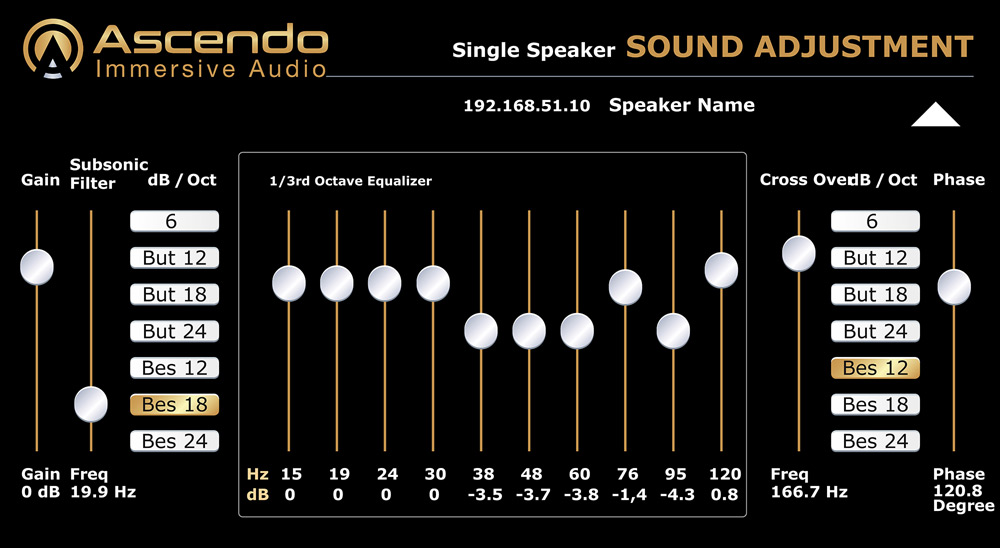
This is what the Ascendo Live 15 sounds like
We first set up a "lite magazine" profile and allow ourselves a little more bass than with the non-roomcorrected basic setting. This makes the sound even more fun - and the Ascendo Live 15 surprises us after only a few seconds: We listen to Anette Askvik's "Liberty" - we have chosen this elegiac song already several times before, because it is greatly produced, the vocals are excellently captured and its numerous synthesizer and electronic sounds are paired to added sound chops and real instruments like cello, piano, saxophone and drums, thus offering a wide sound spectrum. This time, however, we hear the song like new again: Already during the opening keyboard sounds we register greater dynamics, the pulsating swelling and decay of the tones didn’t come up to us in this intensity before. Then the synthetic low bass of the track sets its first accents: We hear the effortlessness and power with which the Live 15 projects these abysmal sounds into the room, while we feel at the same time the pressure of the sound waves on our bodies. My gosh! The Live 15 is supposed to play down to 18 Hertz, and that's what we thoroughly believe now. Suddenly a drumbeat with plenty of reverberation and echo floats above our heads through the listening room and finally disappears into an imaginary distance, while we still can tangibly trace the sound for a surprisingly long time. The Live 15 charms here with great openness and clarity, but also with enormous precision and excellent spatial imaging. The icing on the cake materializes through the now gradually starting vocals: In no time Anette Askvik stands in front of us with her pure, elfish voice, not larger than life as with many other loudspeakers, but with a wonderfully real and correct physicalness. We can perceive every nuance of her singing, every movement of her lips, every tender breath - and this haunting voice, with which the dainty Norwegian woman seems to sing only for us, ceaselessly pulls our full attention! We also get captivated by the instruments that now come into play: with the cello we can follow the bow's stroke on the strings, the swelling and decay of the tone, its transformation in character from a slightly rough to a rich sonorous sound, with the piano we hear the hammers striking the chords with all the dynamically fine gradations of their touch - and with the beautiful saxophone solo at the end of the song we have never noticed before that even the noises of the flaps and the mechanics are captured in this recording. It's these details and subtleties that create a perfect illusion. Now we understand why Ascendo’s designer Stefan Köpf calls the Live 15 a "resolution monster".
Letting the ears wander through the orchestra
We are therefore curious to know how the Live 15 will play out its qualities on classical terrain. For this we will use the award-winning recording of Thomas Arnes' opera "Artaxerxes" and from it the aria "The soldier, tir'd of war's alarms". The Classical Opera Company playing here is presented to us by the Live 15 as a wonderful three-dimensional baroque orchestra: Not an amorphous sound structure, but with a real sound body, in which one can almost wander with the ears through the rows of bowed instruments, wind instruments and percussionists and hear the individual instrument groups in a very targeted manner. This is accompanied by the obligatory harpsichord, without which no opera performance was conceivable at the time. This keyboard instrument in combination with an orchestra often sounds like an annoying sewing machine, but here the Live 15 preserves for the harpsichord the natural, silvery tone that makes up the instrument. Excellent! Now the young British soprano Elisabeth Watts appears in the role of the Xerxes daughter Mandane, she sings in this bravura aria about military life in general, but means her beloved soldiers in particular. On this vocal roller coaster of sounds, Watts pulls out all the stops: with her moving voice, the singer performs ludicrous octave jumps, with her long breath she rows cascades of notes together, sings sparkling coloratura, lets the tones swell and blossom in her chest and throat, abruptly changes from soft mezzo to harsh forte. We experience all the magnificent dynamics that the human voice has to offer! Opera-goers know about its astonishing volume and the unbelievable power of grading out the level, and that's exactly what the Live 15 lets us experience in our listening room. In light of the highest notes and maximum volume levels, we experience the voice extremely intensive, and lastly it's all about emotions! The singing isn't annoying, however, but appears completely obvious and natural. The coaxial tweeter/midrange driver also ensures a high degree of homogeneity, making the entire reproduction seem to be in one piece.
Dynamic fireworks
With the Live 15, we listened to many pieces of music, re-discovering many of them - and time and again we felt the power with which this transducer proves its dynamics and its bass power. That's why we're now going to treat ourselves to a track where the Live 15 can run up to its impulse fidelity in particular: the almost legendary "Jazz Variants" from the O-Zone Percussion Group. This piece of music is a popular demo track because the drum ensemble delivers a magnificent demonstration of percussion. The music offers a lot of fine dynamics, such as the beautifully graded and artistically rhythmic mallet work on triangle, xylophone and various cymbals. Even the tiniest impact noises are fully reproduced by the Live 15, we even perceive the iridescent timbre of the metal and hear where the mallet touches the cymbal. But of course there is also no lack of an impressive demonstration of coarse dynamics. The beats of the kettledrums positioned at the back strike like thunderclaps directly into every limb of our body, belly massage included - here you can experience how incredibly voluminous and profoundly rich a kettledrum can sound! The key highlight then is the rock drummer’s solo, through which he offers an awe-inspiring portfolio of force and vitesse, rawness and precision: The whipping of the snare makes us flinch with every beat, the ride over the toms sweeps over us like a rumbling thunderstorm, the merciless kicks on the bass drum noticeably press down our bodies - this is how a drumset sounds in real life: lively and sprightly, impulsive and without any dynamic limitation. The Live 15 ignites these furious dynamic fireworks in our listening room without any effort - and it doesn't stress the listener either: even after hours of listening to music, this loudspeaker makes you want more, because it performs overt and natural.
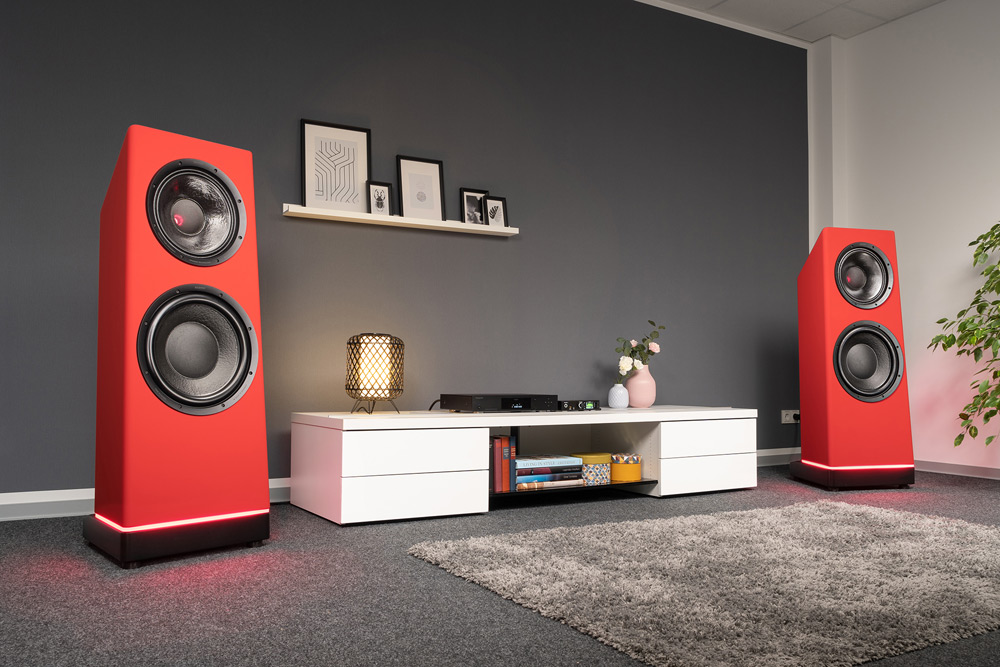
Conclusion
The Ascendo Live 15 lives up to its name: This active three-way speaker delivers an extremely natural rendering of music with superlative three-dimensionality, excellent resolution, extraordinary dynamics and powerful bass - and thus provides the "It sounds like live" feeling. The result is a vigorous combination of tweeter/midrange coax driver and powerful 15-inch woofer, fuelled by four integrated amplifiers with a total of 3,300 watts. The Live 15 is calibrated and adjusted on site - and then offers the possibility of changing the calibrated sound to individual equalizer settings according to tastes or music styles. Control is effected via WiFi through tablet-pc or smartphone. AVB (Audio Video Bridging) enables the Live 15 to be networked, this standard allows audio signals to be streamed directly to the speakers, but of course they can also be fed-in analogously to be then internally converted. This enables signal transport to all components (the stereo set can be expanded to a multi-channel system with a center speaker and up to four subwoofers) flexibly, losslessly and without any delay. This also contributes to the outstanding, seemingly natural performance. This high-end loudspeaker thus allows hours of relaxed music enjoyment, offering the "realitylike" experience at all times.
Test & Text: Volker Frech
Photos: Philipp Thielen, Manufacturer
Valuation
Overall rating: 97/100
Class: Reference class
Value for money: reasonable
Sound 98
Practice 96
Features 97
lite Test rating 2019
97/100
Reference class
www.lite-magazin.de